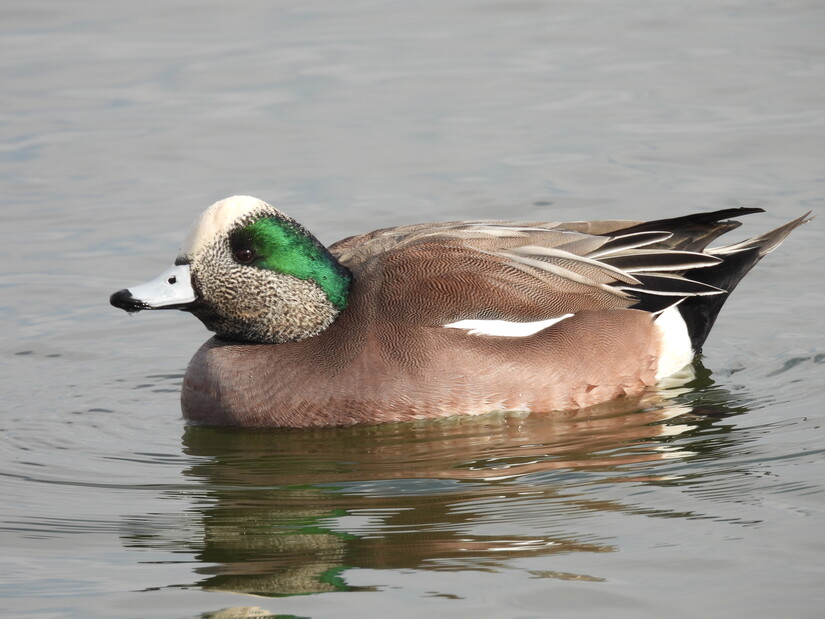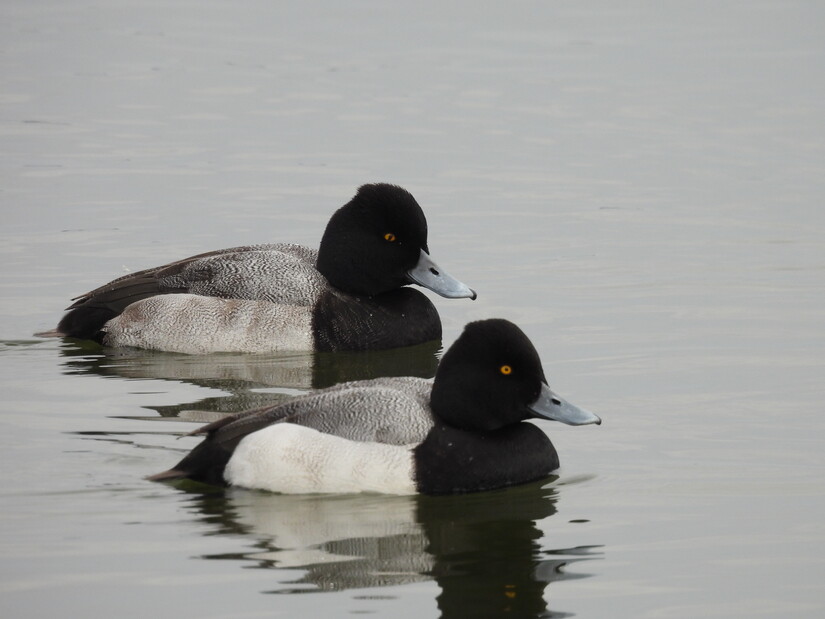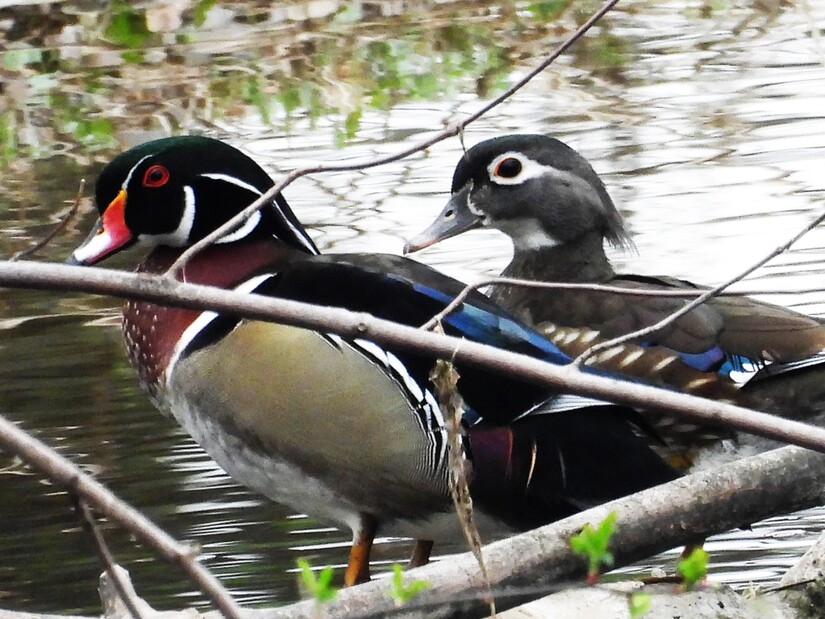Image

Hooded Mergansers are some of Mike's favorite, I'm told.
by Mike Strzelecki*
Mallards are the only duck species that live year-round in the Boyertown region. They can be seen anywhere where there is water - from large puddles to ponds to lakes. A host of other duck species, however, visit this region in the winter. They begin arriving in November and stay through spring. They can be seen on farm ponds, large water bodies (like Green Lane Reservoir and Lake Ontelaunee) and larger streams (Manatawny Creek and the Schuylkill River).
To the untrained birding eye, ducks from a distance all look like brown blobs bobbing in swells or paddling erratically through currents. But a closer inspection (often with the help of a pair of binoculars) shows that the wintering ducks in this region are true spectacles to behold - with brilliant colors and artistic feather designs.
Here are close-up images of 14 duck species that winter-over in the Boyertown region. Some are more common than others, but all are around. Keep in mind that these images are of the male of the species; female ducks tend to be brown or have much duller colors to avoid being noticed by predators when nesting.
The green-winged teal duck is like a piece of fine china, so intricate and delicate, with a brilliant green mask, green and yellow patches around the tail, and a highly intricate feather pattern. They are usually seen on the edges of waterbodies feeding in the shallows, often in moderate-sized groups.

Buffleheads are tiny diving ducks, small enough to be missed by observers. They mostly appear black and white, but when the sun hits just right, their heads emit iridescent greens and purples. They are usually found in deeper water, in groups, performing lightning-fast dives.

Northern shovelers can be seen skulking the shallow waters of ponds and lakes. They use their oversized bill to rake through the mud, searching for morsels to eat. Besides the beak shape, the solid green head and rust sides are the key field marks.

The ruddy duck is a compact species that shows up in great numbers on large water bodies, forming tight rafts. I have seen thousands of them forming what appears to be a small, floating island. They are fairly nondescript in appearance, but are fun to observe because they sport a Donald Duck-style beak.

The American wigeon has a green mask like the green-winged teal, but is more gray in color and has a black butt. These are more uncommon and are often seen hanging with other species of ducks, usually in shallow areas of water, often moving in and out of reeds.

The redhead duck is easily identifiable from its…wait for it….red head. Notice the gold eyes and black tip on the beak.

The canvasback is another red-headed duck that is often mistaken for the redhead duck above. Canvasbacks, however, are a bit larger and have a broad swath of white on the side. Their beak is quite different than that of a redhead duck, being all black and having a profile that looks like a continuous ski slope. When I have sighted canvasbacks, they are usually in very large groups.

Hooded mergansers love to show off their spectacular headgear. These guys group up in squads of three to ten and feed together closely in open water, often diving together as a group. Their appearance is so unique and striking that they are tough to misidentify. They can be seen anywhere - in lakes, streams, rivers. Birders consider seeing hooded mergansers a treat.

Don’t look for a ringed neck on the ring-necked duck; it is usually hidden by their feathers and is only visible when they are flying and have their neck extended. What they do have is a ring around their beak, which is a key field mark. Look for a solid black head and golden eye. Ring-necked ducks are often mistaken for scaups, which we will visit later.

Common mergansers can be found anywhere but I see them mostly in flowing water, like the Manatawny Creek and Schuylkill River. What you look for is a black head white body, and flaring red beak.

Red-breasted mergansers are showy diving ducks that gravitate to big water. They are more ostentatious than the common merganser (with a more interesting feather pattern) and always look like they are having a bad hair day. These are the least common of the three merganser species.

Scaups are known as blue-bills to hunters. They are essentially black, white, and gray. They are fairly common and usually seen in groups. There are two species of scaups - the lesser scaup and the greater scaup. Despite decades of birding, I still cannot tell the two species apart, and have quit trying. But they are beautiful in their simplicity.

Wood ducks are much sought out by birders for their stylish, colorful appearance. Don’t look for them in open water, though. They tend to gravitate to marshy tracts where they can hide in the reeds. I have seen them in tiny, backyard streams in the Boyertown area. With their bold colors and unique facial patterns, many birders consider them the most beautiful duck species.

The northern pintail is identifiable by the beautiful white stripe winding up its brown neck, and standing out strongly against its gray body. The pintail appears regal, with its showy tail feather and complex feather pattern. They are usually seen poking around in shallow water on the edges of lakes and in marshes.

* Mike Strzelecki is a freelance travel and outdoor writer, and 1981 graduate of Boyertown Area Senior High School. He writes from his house in Baltimore, Maryland. In his spare time, he joins his wife on adventures around the country observing and photographing birds.